A case of what’s in a name or something more for them
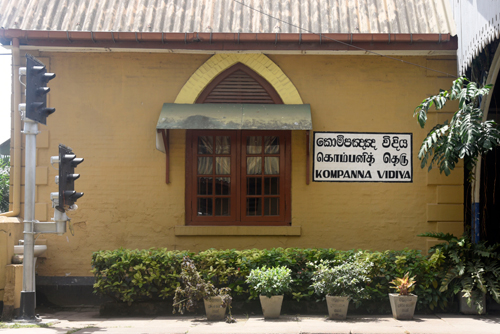
Kompanna Veediya for decades: The Railway Station. Pix by Akila Jayawardena and M.D. Nissanka
It has seen many changes over the years but a historic part of Colombo, commonly known as Slave Island – will no longer be that, with the area to be gazetted as Kompanna Veediya. The decision was announced by the Prime Minister following the country’s 75th independence celebrations.
The Sunday Times walked the bustling streets of this fast changing area where old buildings, small business establishments and street kades that still survive (some still sporting the ‘Slave Island’ tag) are hemmed in by the fast proliferating high-rises.
What do Slave Island’s melting pot of residents feel about the name change? Not surprisingly there are differing shades of opinion. Rajakulendran Hasan, a pharmacist at Slave Island Pharmacy since 2006 says, “Changing the name is not a big problem. Residents are familiar with the term ‘Kompanna Veediya’, but non residents know it as ‘Slave Island’.” They’re not planning on changing the name of the pharmacy though.
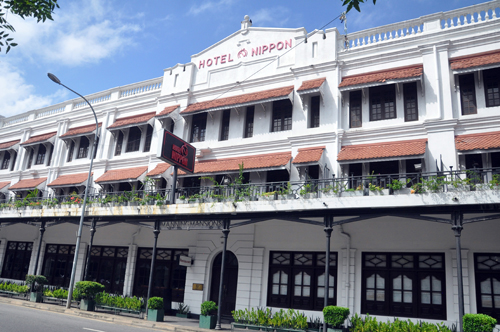
Landmark: The Nippon Hotel
Jayasekera Mudiyanselage Karunarathne, 70, owner of a gram shop has been residing in the area for about 50 years because his wife is from here. He has a good knowledge of the surroundings, and says there is still water under the floor of the station etc. “No one uses the term Slave Island any more. Kompanna Veediya is better,” he smiles.
M. Nadarajah, 65, owner of Angel Arts Studio, which has been there for 20 years prefers the name Slave Island because of its history. “Even foreigners identify it as Slave Island therefore it is not right to rename it. They have already broken down the history of Slave Island,” he says (referring to the demolition of the De Soysa building).
In a lottery stand near the Kompanna Veediya railway station we meet A. K. Neil Karunarathne, a lottery seller who lives in Kadawatha, but has been coming to this spot every day to sell tickets since 1985. The name change doesn’t affect him on a personal level, but he does use the name ‘Slave Island’ when providing directions, for instance.
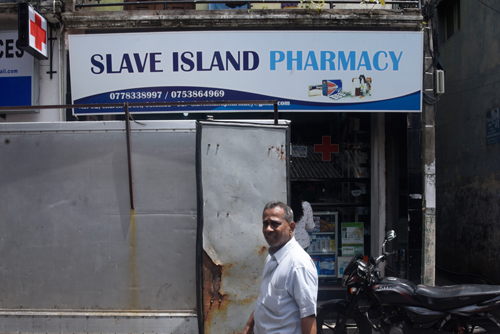
Keeping the old name: A pharmacy in the area
M. N. Asker, has been a resident of Malay Street of 56 years. His opinion was that there is no visible difference as a majority of the area is identified officially as ‘Colombo 02’. This is what is on his National ID, he points out.
Hotel Nippon that has been in business since 1884 is a landmark in this neighbourhood and now tastefully renovated, sees a steady stream of patrons. Its Maintenance Engineer Prasanna Herath had an optimistic view, as he told the Sunday Times that “we like the name Kompanna Veediya” as it is the name often used in colloquial parlance.
Slave Island’s intriguing name has a colourful yet dark history and many writers have documented both its diversity as well as its community.
A.J. Samuel writing in The Ceylon Observer of June 26, 1960 comments:

A. K. Neil Karunarathne
It is more than a little curious than in an era when names of streets and parks are changed overnight as a result of breaking away from conventions that are said to be alien to our culture, an important ward in Colombo, zoned as Colombo 2 is still called Slave Island – despite the fact that it is now neither an island nor an abode of slaves.
The only noticeable change in the nomenclature appears on the Slave Island Railway Station board. It reads: “Kompannavidiya” which is also a relic of the good old days when a company of gun lascars was stationed there.
How it got its name:
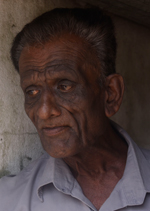
J.M. Karunarathne
History records that Slave Island was at one time an abode of slaves. The Dutch during their rule had domestic slaves working for them in their households.
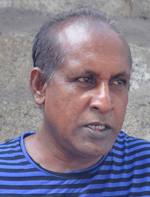
M. N. Asker
One night the slaves of a particular Dutch household in the Fort rose in rebellion against their masters and destroyed the whole family.
Thereafter all the slaves in the Fort , after the day’s work was done, were collected in punts and rowed across the lake to this ‘island’ and kept there till morn.
Some of its key features:
Kew Road in Slave Island was the first Botanical Gardens in Ceylon, and the first qualified curator of that Garden was from Kew.
Slave Island at this stage was a military dependency, maintained at the expense of the Imperial Government. It was also the headquarters of Lt. General and staff. It was the most lively place from a military point of view.
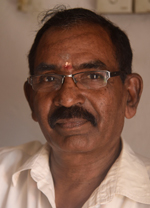
M. Nadarajah
And the Malays:
The Malays who are the most influential community in Slave Island today are the descendants of the Royal families of Java, Sumatra and the Malay Peninsula.
Quite a number of them were employed in the defence of Ceylon as mercenary soldiers under the Swiss Commander De Meuron.
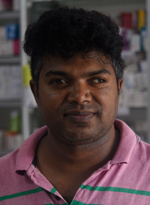
Rajakulendran Hasan
The Malays who stayed back on Ceylon were utilised by the British in the formation of their own local regiment, the Ceylon Rifle Regiment. They made Slave Island the headquarters of the Ceylon Rifle Regiment.
The Malay community which has long been associated by Slave Island – think places like Java Street and the Padang – have hailed the name change with the Sri Lanka Malay Association expressing their gratitude to the PM for initiating it.
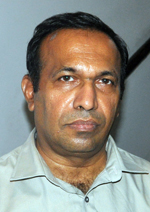
Prasanna Herath
Names tend to stick and while for the older generation, it may take some persuasion to stop calling it ‘Slave Island’, the familiar ‘Kompanna Veediya’ will, in the future have people asking the same question of how it got its name. This is a less disturbing origin, harking back to 1866 when the Colombo Ice Company was set up on the banks of the Beira Lake. Its then novel product much in demand, the ‘Ice Kompanniya’ on Glennie Street evolved into Ceylon Cold Stores Ltd. and Slave Island came to be called “Kompanni Veediya” (Company Street).
Additional reporting by
Dilushi Wijesinghe
Searching for an ideal partner? Find your soul mate on Hitad.lk, Sri Lanka's favourite marriage proposals page. With Hitad.lk matrimonial advertisements you have access to thousands of ads from potential suitors who are looking for someone just like you.


